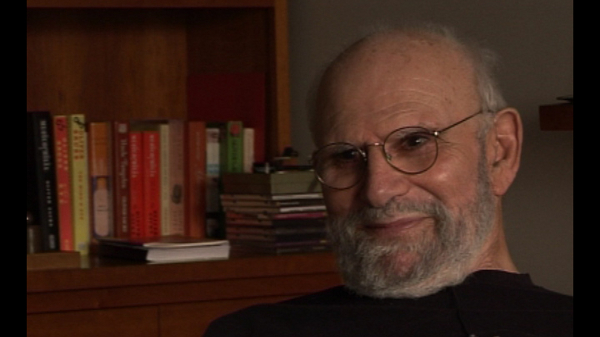NEXT STORY

Wells versus Stapledon; Owen versus Darwin
RELATED STORIES

NEXT STORY

Wells versus Stapledon; Owen versus Darwin
RELATED STORIES


|
Views | Duration | |
|---|---|---|---|
| 291. Not Dying by F Robert Rodman | 265 | 01:10 | |
| 292. F Robert Rodman's influences, family and death | 382 | 01:10 | |
| 293. Love of HG Wells and using Country of the Blind | 221 | 04:23 | |
| 294. Using HG Wells's stories in my own work | 166 | 02:02 | |
| 295. HG Wells' portrayal of Neanderthals | 200 | 00:39 | |
| 296. HG Wells' visions of the future | 172 | 00:41 | |
| 297. Stalking HG Wells? | 203 | 00:50 | |
| 298. HG Wells’ and Olaf Stapledon's work and their influence on... | 248 | 01:58 | |
| 299. Wells versus Stapledon; Owen versus Darwin | 199 | 01:52 | |
| 300. Science fiction, Star Trek and meeting Mr Spock | 518 | 02:27 |


The... his last book was called, Mind at the End of its Tether. It was a rather grim book. After the early stuff, which now would be called science fiction, but the term science fiction, which I dislike, didn’t... didn't exist, I think, at the time – Wells moved into all sorts of social novels. I never read those, or if I read them I was bored. There was Ann Veronica, and Tono-Bungay, and Kipps, and a lot of them, but he also wrote, either as sole author or co-author, some really wonderful encyclopaedic works. One of them was The Outline of History, and the other, which he wrote with Julian Huxley and his own zoologist son, was a... a wonderful biology book. But in the end he... he became ill, and... and I think rather depressed and pessimistic, but he was... affected me very much, and so too did another writer, who was Olaf Stapledon.
One of Olaf Stapledon’s novels, Sirius, is about a dog, which through neurosurgical manipulation was given human intelligence, and I think it’s a very, very moving description of being torn between animal instincts and... and human sensibility, which of course, we all are, but it was embedded in a dog. There’s also an amazing book of Olaf Stapledon's, Last and First Men, in which he imagines, I don’t know, something like 20 generations, 20 future species of man – huge range.
Oliver Sacks (1933-2015) was born in England. Having obtained his medical degree at Oxford University, he moved to the USA. There he worked as a consultant neurologist at Beth Abraham Hospital where in 1966, he encountered a group of survivors of the global sleepy sickness of 1916-1927. Sacks treated these patients with the then-experimental drug L-Dopa producing astounding results which he described in his book Awakenings. Further cases of neurological disorders were described by Sacks with exceptional sympathy in another major book entitled The Man Who Mistook His Wife For A Hat which became an instant best seller on its publication in 1985. His other books drew on his rich experiences as a neurologist gleaned over almost five decades of professional practice. Sacks's work was recognized by prestigious institutions which awarded him numerous honours and prizes. These included the Lewis Thomas Prize given by Rockefeller University, which recognizes the scientist as poet. He was an honorary fellow of both the American Academy of Arts and Letters and the American Academy of Arts and Sciences, and held honorary degrees from many universities, including Oxford, the Karolinska Institute, Georgetown, Bard, Gallaudet, Tufts, and the Catholic University of Peru.
Title: HG Wells’ and Olaf Stapledon's work and their influence on me
Listeners: Kate Edgar
Kate Edgar, previously Managing Editor at the Summit Books division of Simon and Schuster, began working with Oliver Sacks in 1983. She has served as editor and researcher on all of his books, and has been closely involved with various films and adaptations based on his work. As friend, assistant, and collaborator, she has accompanied Dr Sacks on many adventures around the world, clinical and otherwise.
Tags: Sirius, Mind at the End of its Tether, Tono-Bungay, Kipps, The Outline of History, Last and First Men, HG Wells, Olaf Stapledon, Ann Veronica, Julian Huxley, Anthony West
Duration: 1 minute, 58 seconds
Date story recorded: September 2011
Date story went live: 02 October 2012